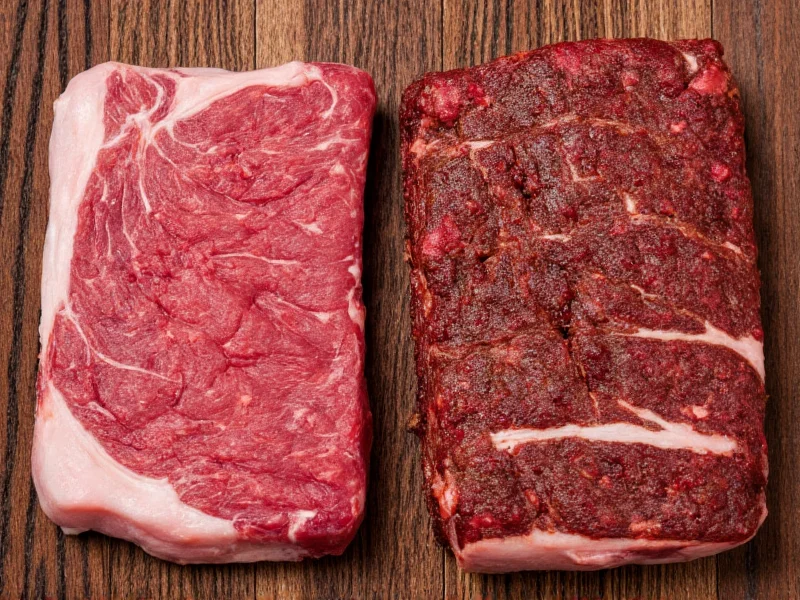Understanding the distinction between short ribs and beef ribs is essential for both home cooks and culinary professionals. Despite common confusion in terminology, these cuts have significant differences that impact flavor, texture, and cooking approaches. Let's explore these beef cuts in detail to help you make informed choices for your next cooking project.
Anatomical Origins: Where These Cuts Come From
The confusion between short ribs and beef ribs often stems from imprecise language in grocery stores and restaurants. To clarify:
- Short ribs specifically come from the plate section of the cow (ribs 6-9), located below the rib cage near the belly
- Beef back ribs come from the rib and loin sections (ribs 10-12), attached to the spine behind the main rib section
- Beef spare ribs (less common) come from the brisket area
Short ribs contain more marbling and connective tissue because they come from a heavily exercised part of the animal, while back ribs have less fat and more bone relative to meat.
Physical Characteristics Comparison
| Characteristic | Short Ribs | Beef Back Ribs |
|---|---|---|
| Source on Animal | Plate section (ribs 6-9) | Rib and loin sections (ribs 10-12) |
| Appearance | Shorter, meatier bones in rectangular chunks | Longer, curved bones with less meat between them |
| Bone Structure | Individual short bones with substantial meat cap | Longer bones connected in a "rack" formation |
| Fat Content | Higher marbling and connective tissue | Leaner with less intramuscular fat |
| Meat-to-Bone Ratio | Higher meat content (60-70% meat) | Lower meat content (40-50% meat) |
Terminology Confusion Explained
The phrase “beef ribs” creates confusion because it's used as both a general category and a specific product name. When butchers and restaurants say “beef ribs,” they might be referring to:
- Short ribs (most common meaning in specialty markets)
- Back ribs (common in barbecue contexts)
- A combination of both (in some grocery stores)
This inconsistent labeling explains why many home cooks struggle to understand the difference between short ribs and beef ribs. The most reliable approach is to ask your butcher for the specific cut you need rather than using general terms.
Cooking Properties and Best Methods
The structural differences between these cuts dictate their ideal cooking approaches:
Short Ribs
With their substantial meat cap and higher collagen content, short ribs excel with slow, moist-heat cooking methods. The best techniques include:
- Braising (3-4 hours at 300°F/150°C)
- Slow cooking in liquid-based recipes
- Smoking at low temperatures (225°F/107°C for 6+ hours)
When properly cooked, short ribs become incredibly tender with rich, beefy flavor that falls off the bone. The difference between short ribs and beef ribs becomes most apparent during cooking—short ribs maintain their substantial meat portion while back ribs shrink significantly.
Beef Back Ribs
Back ribs work well with both dry and moist heat methods but require careful attention to prevent drying out:
- Low-and-slow smoking (indirect heat at 225-250°F/107-121°C)
- Grilling with indirect heat after initial searing
- Combination methods (sear then braise)
Because back ribs have less meat and more bone, they cook faster than short ribs but require more precise temperature control to avoid toughness.
Flavor Profiles and Culinary Applications
Understanding the flavor differences between short ribs and beef ribs helps determine their best culinary uses:
- Short ribs deliver intense beef flavor with rich mouthfeel due to higher fat content. They're ideal for dishes where beef flavor should dominate, such as Korean galbi, French pot-au-feu, or hearty beef stews.
- Beef back ribs offer more subtle beef flavor with cleaner finish. They work better for barbecue applications where rubs and sauces play prominent roles, as their leaner profile absorbs flavors more readily.
When comparing short ribs vs beef ribs for special occasions, short ribs generally provide more visual impact and substantial eating experience, while back ribs offer more traditional “rib” presentation.
Purchasing Guide: What to Look For
When shopping for these cuts, pay attention to these quality indicators:
- Color: Bright cherry red for freshness (avoid brown or gray tones)
- Marbling: Visible fat streaks throughout the meat (more pronounced in short ribs)
- Meat thickness: At least 1 inch of meat on short ribs; consistent meat coverage on back ribs
- Bone appearance: Clean, white bones without excessive blood spots
- Packaging: Minimal liquid in the package (indicates proper handling)
Ask your butcher specifically for “plate short ribs” rather than just “short ribs” to ensure you're getting the meatier cut. For back ribs, request “beef loin ribs” for the meatiest version.
Recipe Recommendations by Cut
Matching the right cooking method to each cut maximizes results:
Best Short Rib Recipes
- Korean braised short ribs (galbi jjim)
- Red wine-braised short ribs
- Asian-style short rib soup
- Slow-cooker short rib ragu
Best Beef Back Rib Recipes
- St. Louis-style barbecue ribs
- Memphis dry-rubbed ribs
- Beer-braised beef back ribs
- Grilled ribs with coffee rub
Common Misconceptions Clarified
Several myths persist about these cuts:
- Myth: Short ribs come from baby cows
Truth: They come from adult cattle—the “short” refers to the bone length, not the animal's age - Myth: Beef ribs and pork ribs cook the same way
Truth: Beef ribs require longer cooking due to denser muscle structure - Myth: All beef ribs are suitable for grilling
Truth: Only back ribs work well for direct grilling; short ribs need slow cooking
Understanding the difference between short ribs and beef ribs prevents costly cooking mistakes and ensures you select the right cut for your recipe. Whether you're preparing a special dinner or expanding your culinary knowledge, recognizing these distinctions elevates your cooking results significantly.











 浙公网安备
33010002000092号
浙公网安备
33010002000092号 浙B2-20120091-4
浙B2-20120091-4